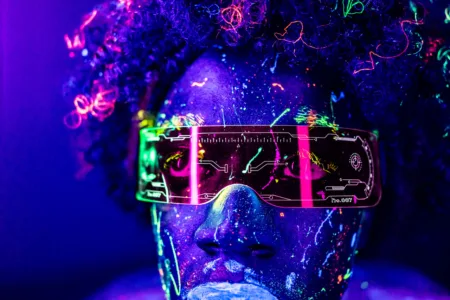January 1, 2024
AV in higher education – 7 ways in which AV is changing the learning landscape

As technology moves fast, higher education technologies are moving along, while adapting to an ever-evolving world. Teaching and learning today look very different to just a few years ago. As technology has advanced, varied new learning models have come to the fore. Location is now less important, as both teaching and learning can take place from anywhere.
As part of this technological race, AV technologies are playing an increasingly pivotal role in changing the learning landscape in higher education.
In this blog post, we shed light on the 7 key trends that demonstrate how AV in higher education is redefining the learning landscape, offering immersive, data-driven, and personalized educational experiences.
AI, VR, and AR: Shaping future learning
The burgeoning influence of augmented reality (AR), virtual reality (VR), and artificial intelligence (AI) on higher education is significant. These next-generation technologies are already capturing the imagination of learners, offering them interactive and immersive educational experiences. Pioneers in the field are collaborating with students to build proofs-of-concept, leveraging these technologies to further enrich education.
Focusing on functionality and personalization
The era of generic learning spaces is behind us. Today’s pedagogical practices and specific-use needs now shape the AV technology and design found in each learning space, such as quiet, semi-quiet, and remotely quiet; these environments are similar – but differ in important ways that make them convenient for different students.
New roles, such as “learning environment manager,” have emerged to design spaces that suit the unique pedagogical demands, thereby transforming conventional classrooms into collaborative classrooms integrated with AV tailored for higher education.
Crafting immersive learning scenarios
The pursuit of immersive learning environments is fueling the adoption of advanced AV solutions for higher education. Multiple cameras in learning spaces and collaborative classrooms offer seamless transitions between viewpoints, giving students a multi-faceted understanding of the subject. Cutting-edge LED walls enhance the depth of the immersive learning experience.
Elevating the student experience
Higher education is pivoting towards a student-centric approach. Institutions are tailoring AV solutions to fit the diverse needs and learning styles of students, enabling them to engage with the material in ways that resonate with them personally – and giving them the freedom to learn wherever and however they feel most comfortable.
Utilizing data for enhanced learning
Data-driven insights are increasingly shaping educational strategies. Emerging products that monitor brainwaves and eye movements provide invaluable data for adapting teaching techniques, thereby optimizing student learning experiences and outcomes.
Addressing challenges in AV adoption
While AV technologies offer promising advantages, challenges in effective integration exist. One significant obstacle is the learning curve for educators themselves, who may have little time to learn new technologies.
Additionally, with the increasing focus on educators’ needs and preferences, teaching tools need to be more personalized, while supporting the continuity of the experience in the classroom and beyond.
Comprehensive training programs and support tools offer a remedy by facilitating a quick and consistent educational experience across various learning spaces.
The potential of voice control and wearables
The advancements in voice control technology are streamlining AV system management and reducing adoption barriers. Emerging wearable technology like smartwatches and smart glasses offer additional layers of interactivity, further enriching the learning experience.
Conclusion: Pioneering the educational frontier
As we move into the future, AV solutions for higher education are altering the way higher education functions. From AR, VR, AI to personalized design principles, AV in higher education is setting the stage for groundbreaking educational experiences.
Although challenges like educator adoption and the need for flexible learning spaces remain, the possibilities for transformative change are limitless. By adopting the latest trends in AV for higher education, institutions can place themselves at the vanguard of educational innovation.
Are you ready to unlock the future of learning with audio-visual innovations? Join us as we embark on this exciting journey of transformative education.







